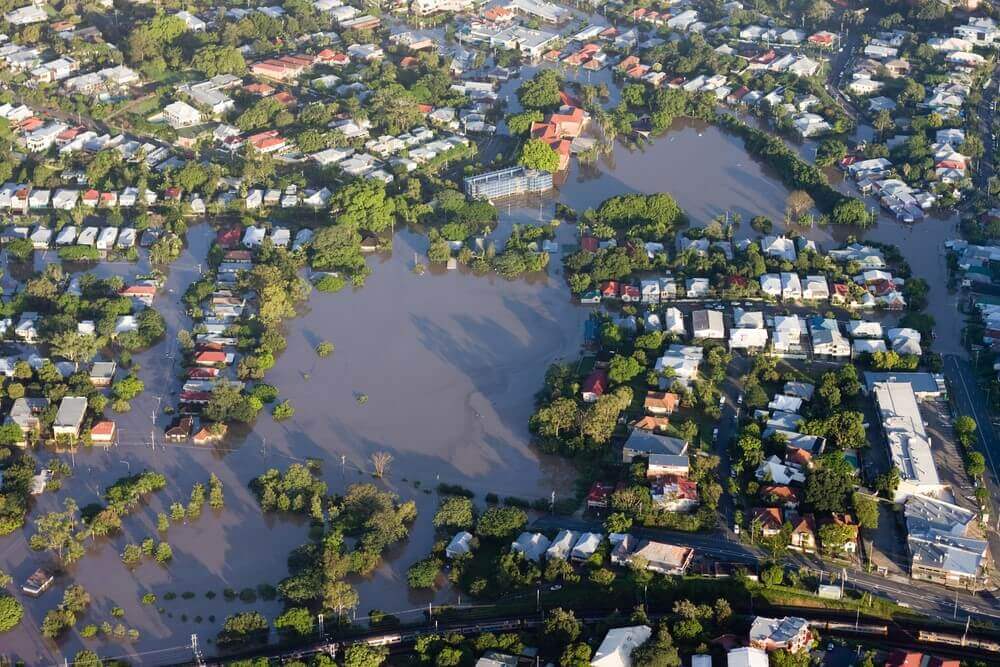When Your House Floods, This is What You Need to Know
Get Inspired
Whether you live within a floodplain or not, floods can happen at any time – rain or shine. They are often caused by cyclones or by rivers and lakes overflowing and breaking banks after storms. During a flood, you or your family may be stranded. Remember to never try to walk or drive through a flood, as conditions can change drastically within seconds.
There’s plenty of time to restore your property after the danger has passed, but during and in the immediate aftermath of a flood, it’s much more important to put safety first. If your home does flood, there are steps you can take to protect yourself and your family.
Before the Flood
Thanks to technology and modern communication infrastructure, chances are you will get a little advanced warning before the flood hits. This window may give you some time to minimise losses while giving you and your family time to vacate the flood area.
Be sure to continuously monitor local radio, TV or the Bureau of Meteorology website. They can be invaluable sources for up-to-the-minute information on storm surges. If you can, relocate to a safer place well before the flood comes. For information on road closures due to flood you can call NSW Roads and Maritime (RMS) on 132 701 or visit the live traffic website.
Before evacuating:
· Turn off electricity, gas, and water in your home
· If possible, move furniture and other valuables to the highest point in your house
· Secure loose objects and any outdoor equipment
· Secure and store waste containers, and chemicals or poisons
· Empty freezer and refrigerators, and leave the doors open
· Put sandbags in the toilet bowl and over drains to stop sewage back-flow
Be sure to check on your neighbours to make sure they too are prepared and assist where possible. Don’t forget to help your pets or other animals get to safety as well.
Prepping an emergency kit before the flood is also essential. Be sure to include a waterproof bag that can hold important documents and items, such as passports, IDs, cash or bank cards and insurance policy information for easy access. Emergency kits should include items such as a waterproof torch, toiletries, first aid supplies, 12L of drinking water per person, and enough canned food for 4 days.
During the Flood
During the onslaught of a flood, avoid walking, driving, swimming or playing in the floodwater. The water itself can be hazardous, not because of the current alone. It could contain high levels of bacteria, dangerous chemicals, or sewage. If you absolutely need to walk somewhere during a flood, be sure to wear some sort of footwear and avoid drains or culverts as well as any water that is more than knee deep. Be sure to avoid downed power lines.
During a flood, communication is essential. Continue to monitor information sources such as local radio or TV and let friends and family know where you are or where you are going. If you have information that could help others, be sure to share it by contacting your local ABC Radio station to inform them of what you know. First-hand knowledge can save lives and help others in the community.
If you find yourself stranded in flood water, call for help immediately. Call your local State Emergency Service (SES) on 132 500 dial 000 if your situation is life-threatening. If you are separated from family during a flood, you can register with Redcross under: Register.Find.Reunite enquiry service at an evacuation or relief centre.
After the Flood
Never enter a flood affected area until authorities have declared the area safe. Before entering your home, wait until the water has receded to below floor level. Protect yourself by wearing rubber boots or rubber-soled shoes and rubber or leather gloves.
Before you attempt to turn on any electricity, gas or water lines, be sure to check with the proper authorities to determine whether the supplies to your area are safe. If your water supply system has been flooded, be aware that your water supply will be contaminated. This may require you to rely on either bottled or boiled water for an interim period until the water contamination has been handled.
Whether you are inside or outside of your home, treat every electrical item with great care. Every source of electricity can be quite hazardous in flooding conditions. Watch out especially for exposed wires or downed power lines around the home.
Move around your house slowly and with caution. Carry a torch while inspecting the damage. Be particularly cautious on floors and stairs. Watch for protruding nails, missing floorboards, or weakness in the floor itself. Wet plaster is quite heavy and dangerous, so avoid if possible walking below bulging ceilings. Do not smoke or use any type of open flame, as escaping gas may have collected in pockets in the building. Be especially mindful of encountering snakes and spiders who may have taken refuge in your home during the deluge.
Once you’ve assessed the damage, it’s time to take stock on what may be salvaged. Contact your insurance company and begin to communicate the damage. Certain items, such as mattresses, once wet, will need to be discarded. Items like fridges and freezers may be able to be cleaned and disinfected. Hot water systems will need to be repaired by an experienced professional.
Preparing for a flood, and knowing what to do and where to go will help you stay safe when your house floods. Remember that items can be replaced and walls can be rebuilt. The most important thing to know when a flood happens is how to keep you and your family safe.
Contact your local Emergency Service to learn more about flooding in your area. Kennards Hire can help provide tools and equipment to help get you through a flood. Contact us to learn more about how we can help.

